SESAMUM
Sesamum
L., Sp. Pl. 634. 1753; Gen. Pl. ed. 5. 282. 1754; Clarke in Hook. f., Fl. Brit. Ind. 4: 386. 1885; Fl. Pak.@ eFloras.org; Fl. China @ eFloras.org 18: 226.
Annual or perennial herbs, rarely shrubs, erect or spreading. Leaves simple, opposite, upper alternate, sessile or petiolate, linear to lanceolate, entire to digitately lobed. Flowers axillary, solitary or few in fascicles, bisexual, zygomorphic, hypogynous, white, purplish or rosy, sometimes marked with yellow spots; pedicel short. Sepals 5, connate at the base, persistent or deciduous. Corolla obliquely campanulate, obscurely 2-lipped; tube ventricose; limb 5-lobed, lowest lobe longest. Stamens 4, epipetalous, didynamous, included; anthers bithecous, dorsifixed, sagittate; connective glandular on the top. Disc annular, glandular. Carpels 2, syncarpous; ovary 2-locular, becoming 4-locular by false septum up to apex, ovules numerous, uniseriate in each loculus, placentation axile; style 1, filiform usually with 2 stigmas. Fruit a longitudinally dehiscing capsule, oblong to obconical, tetragonal, 4-locular, 4-grooved (sulcate), beaked at the apex. Seeds small, numerous, obliquely oblong, pyriform or obovate, with or without wings, smooth or rugose.
31 species
Sesamum indicum
Sesamum indicum
L., Sp. Pl. 2: 634. 1753; Clarke in Hook. f., Fl. Brit. Ind. 4: 387. 1885; Maheshwari, Illustr. Fl. Delhi f. 161. 1996; Fl. Pak.@ eFloras.org; Fl. China @ eFloras.org 18: 226; S. orientale L., Sp. Pl. 2: 634. 1753; Babu, Herb. Fl. Dehradun 372. 1977; Seegler, Taxon 38: 658. 1989; Kaur & Sharma, Fl. Sirmaur 478. 2004.
Annual herb, up to 1 m tall, erect. Stem branched or unbranched, 4-angled, sulcate, pubescent or puberulous. Leaves opposite or alternate in upper part; petiole 0.5-13 cm, pubescent, with dorsal groove; leaf blade very much variable on the same plant, linear, narrowly oblong, ovate or lanceolate, margin entire, subentire, serrate, lobed or variously 3-parted, apex acute or acuminate, base cuneate or rounded, 3-18 cm x 0.5-4 cm, adaxially glabrous or puberulent, abaxially pubescent. Flowers axillary, solitary or in small fascicles, with strong unpleasant odour, ca. 3.5 cm long and ca. 2 cm across, bracteate, bisexual, zygomorphic, hypogynous; pedicels up to 5 mm long with 2 glands, one on either side at the base, pubescent; bracts linear, pubescent, caducous. Calyx 5-6 mm long, +/- campanulate, lobes connate only at base; lobes 5, linear to narrowly lanceolate, pubescent, persistent. Corolla obliquely campanulate, 2-3.5 cm long, white, pink or mauve-pink with darker markings inside, light yellow within near base of anterior lobe; tube ventricose, densely softly hairy without; limb 2-lipped, upper lip with 4 shallow lobes, the anterior lobe largest forming lower lip. Stamens 4, epipetalous, didynamous; filaments 1-1.2 cm long; anthers bithecous, sagittate, dorsifixed, dehiscence longitudinal, connective gland-tipped. Carpels 2, syncarpous; ovary ca. 4 mm long, oblong, pilose; style ca. 1 cm long; stigma bifid, shortly hairy. Fruit oblong, capsule, 2-2.5 cm long, 5-7 mm broad, rounded at base, 4-angular, 4-sulcate, acuminate, 4- locular, loculicidal, pilose without. Seeds black or white, 2-3 mm long, 1-1.5 mm broad, wingless, smooth.
Common Names: Sesame; Safed Til (Hindi)
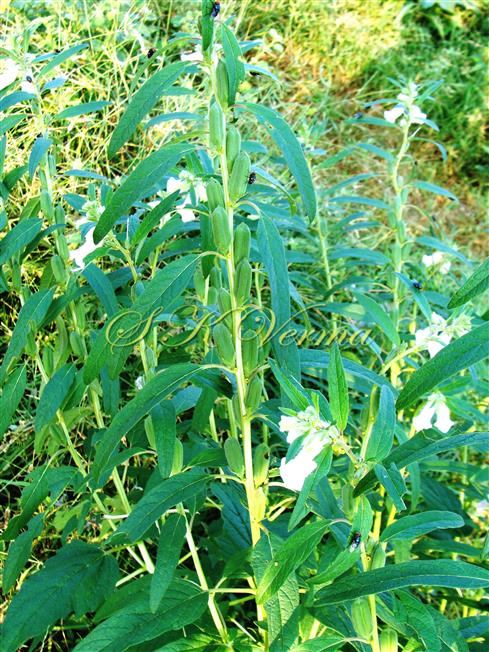
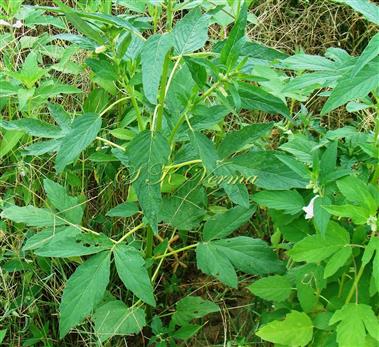
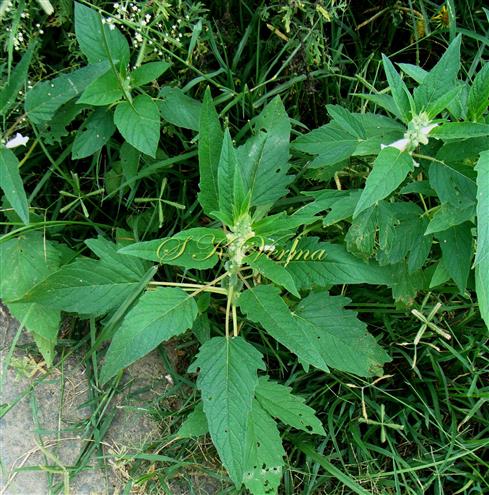
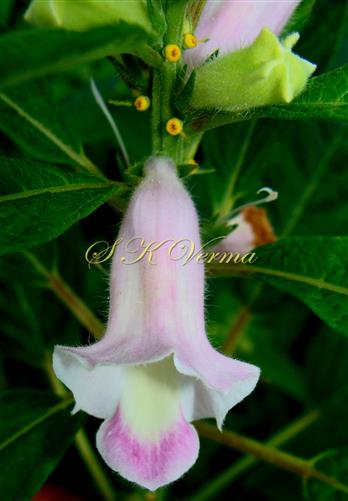
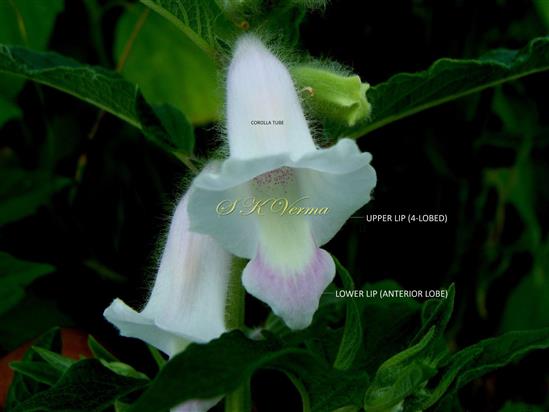
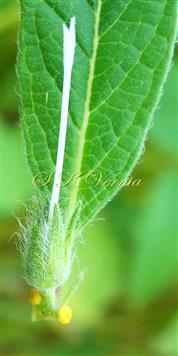
-9168.jpg)
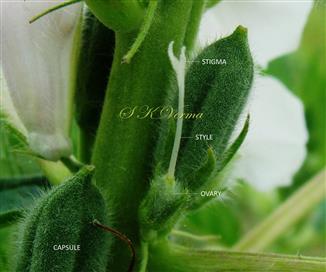
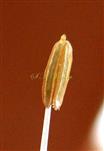
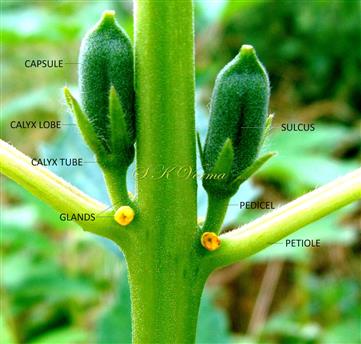
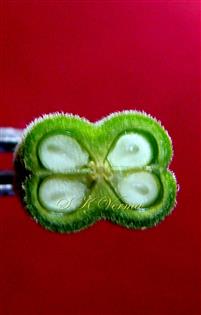
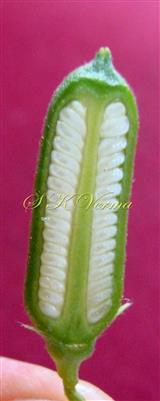







-9168.jpg)




